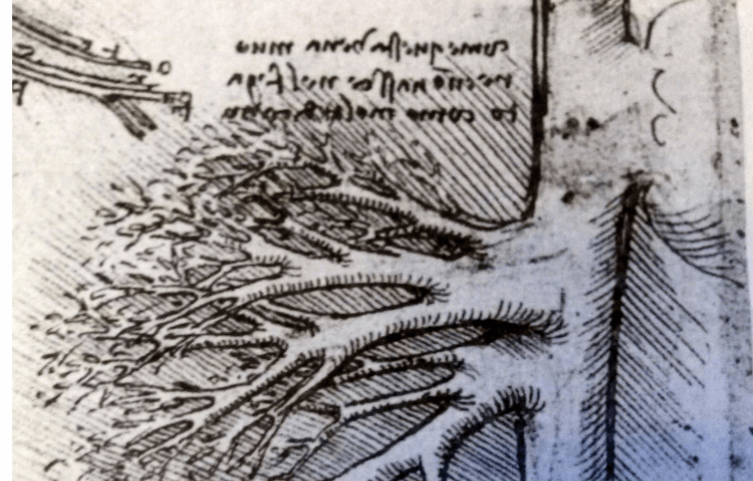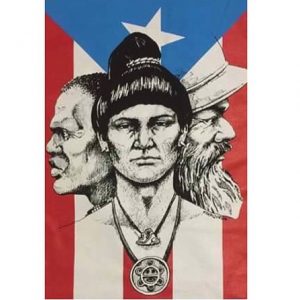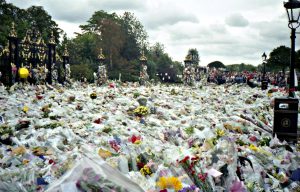In the year 1300, Pope Boniface VIII issued a papal decree, De Sepulturis, which outlawed various methods of lightening the bodies of the diseased for the ease of transport. These methods–common among the Crusaders in the Near East–included the removal of flesh by boiling as well as dismemberment, which also allowed for bodies to be stored in more compact containers. For years after, De Sepulturis was misinterpreted to include the condemnation of anatomical dissection, and for years the study of anatomy would suffer from this misconception. Over time, however, anatomical dissections regained popularity and became important not only to scientists of the body, but also to artists like Michelangelo and Leonardo Da Vinci. However, even into the 1500’s, anatomical sketches were considered distractions unworthy of publication in anatomy textbooks.1

Leonardo Da Vinci, the famous Italian polymath most commonly known today for his painting Mona Lisa, was not renowned for his anatomical diagrams in his time; but unlike his artist peers, his illustrations of the human structure went far beyond the superficial arteries and musculature. While his diagrams do not indicate formal training or even first-hand experience at dissection, Da Vinci began sketching the human anatomy at four different perspectives, simulating a three-dimensional model. Furthermore, Da Vinci sketched the bodily organs, and even wrote about their anatomical functions. It seems that it was Da Vinci’s unquenchable thirst for knowledge and inquiry that drove him to observe deeper than what most deemed necessary. This was characteristic of Leonardo from a young age. Indeed, in 1478, when Leonardo began his career in Florence under the Compagnia de San Luca, he was just sixteen. His early loves for mathematics and mechanics were maintained throughout his life and consistently influenced his vision of the world.4;

Vision was a key aspect to human knowledge to Da Vinci. Being a man of many talents and interests, Da Vinci was drawn to many occupations, and in 1478, after recommending himself to the Duke of Milan, he was made a royal appointee to the duke, Lodovico Sforza, as chief military engineer. In his letter of self-recommendation, Da Vinci referred to himself not only as an artist, but also as a mathematician, architect, and engineer. One of Da Vinci’s first tasks in Milan was to supervise the construction of the Cathedral at Pavia, which would become one of the largest cathedrals in the world. However, it is reported that Da Vinci became so immersed in the theoretical aspects of the physical laws and mechanics involved in the construction of the cathedral that his subordinate had to assume leadership on the practical matters of construction. During this time, Da Vinci also began a practice that has allowed historians and enthusiasts to obtain much deeper insight into the course of Da Vinci’s intellectual studies; like many intellectuals of the Renaissance, Da Vinci began cataloging and recording his studies in notebooks. Many of the anatomical sketches that still survive today were contained in such notebooks. Regardless of his official position as chief military engineer, however, Da Vinci’s primary modes of creation were artistic. Indeed, it was in Milan that Da Vinci finished the paintings Madonna of the Rocks, and The Last Supper; both are masterpieces of human expression and artistic style and technique.5
In 1500, Da Vinci left Milan and continued to paint. He spent several years as a vagabond and finished few paintings during these years, although the famous Mona Lisa was among those left unfinished around the year 1503. At the age of sixty-three, he was appointed to the company of the king of France, near Ambroise, where his chief duty was to keep good company to the king. Leonardo spent the last ten years of his life continuing his research in the realm of the physical sciences, and died on May 2, 1519.6
- Leonardo da Vinci, Leonardo Da Vinci on the Human Body: The Anatomical, Physiological, and Embryological Drawings of Leonardo Da Vinci, eds. Charles Donald O’Malley and John Bertrand de Cusance Morant Saunders (New York: H. Schuman, 1952), 13. ↵
- Leonardo da Vinci, Leonardo Da Vinci on the Human Body: The Anatomical, Physiological, and Embryological Drawings of Leonardo Da Vinci, eds. Charles Donald O’Malley and John Bertrand de Cusance Morant Saunders (New York: H. Schuman, 1952), 131. ↵
- Leonardo da Vinci, Leonardo Da Vinci on the Human Body: The Anatomical, Physiological, and Embryological Drawings of Leonardo Da Vinci, eds. Charles Donald O’Malley and John Bertrand de Cusance Morant Saunders (New York: H. Schuman, 1952), 14-16. ↵
- Leonardo da Vinci, Leonardo Da Vinci on the Human Body: The Anatomical, Physiological, and Embryological Drawings of Leonardo Da Vinci, eds. Charles Donald O’Malley and John Bertrand de Cusance Morant Saunders (New York: H. Schuman, 1952), 14-19 ↵
- Leonardo da Vinci, Leonardo Da Vinci on the Human Body: The Anatomical, Physiological, and Embryological Drawings of Leonardo Da Vinci, eds. Charles Donald O’Malley and John Bertrand de Cusance Morant Saunders (New York: H. Schuman, 1952), 18-21; Toby Lester, Da Vinci’s Ghost : Genius, Obsession, and How Leonardo Created the World in His Own Image (New York : Free Press, 2012), 117-121; Salem Press Biographical Encyclopedia, 2016, s.v. “Leonardo Da Vinci,” by James Livingston. ↵
- Salem Press Biographical Encyclopedia, 2016, s.v. “Leonardo Da Vinci,” by James Livingston. ↵



90 comments
Rosa Robledo Martinez
Leonardo da vinci was a well respected man. I remember learning about him sometime in my middle school or high school years, I always remembered that he was on of the best artist to ever live. I think he was one of the most brilliant man because his not only was good in art but he was always also involved with a lot of scientific things. Leonardo da Vinci has a lot of paintings in modern day that is considered to be extremely expensive.
Kenneth Gilley
I knew very little about Leonardo Da Vinci until I read this article. He certainly had a wide variety of interests. He studied anatomy, mathematics, mechanics, engineering, and, of course, art. It is no wonder that he was appointed to the company of the king of France. Clearly, Leonardo Da Vinci was one of the most intelligent and talented people to have ever lived. This was a very interesting article!
Andrea Degollado
This is a great article! As someone who really enjoys art its interesting to read about Leonardo da Vinci, I remembering learning about him in my art appreciation class. I think its amazing that aside from being a painter he was also a mathematician, because usually when a person is creative and uses their right side of the brain they aren’t usually good at mathematics. That just shows how much talent Da Vinci had.
Danniella Villarreal
I remembered seeing the anatomical sketches Leonardo Da Vinci made and the realist art movement to make paint humans more accurately. I barely know anything about this man so reading this article was very interesting because I got to learn something new. HIs accomplishments are surprising and he is a true genius. This was a very well written article.
Michael Leary
Very interesting article about Leonardo Da Vinci. I remembered seeing the anatomical sketches he made and the realist art movement to make paint humans more accurately. It is very interesting how there was an encyclical about not lightening bodies and people took that as not to study anatomy or publish body sketches. Leonardo Da Vinci was truly a renaissance man.
Ryan Estes
I remember learning about Leonardo Da Vinci in high school. The only thing I faintly remember is learning how dangerous it was to have access to bodies for dissection in Leonardo’s time. This article was very interesting because it taught me a lot of new information that I didn’t know about Leonardo. I didn’t know he was a royal appointee to the Duke of Milan, and I didn’t know he was a chief military engineer. I find it interesting that he focused more on his art despite being a chief military engineer. I love the paintings The Last Supper and The Mona Lisa, and his drawing of the Vitruvian Man is extraordinary. His work will always be remembered for its detail and beauty.
Diego Terrazas
Da Vinci was a true genius unlike any other. I believe there would not be someone like him for the rest of human history. I wonder how differently he saw the world and I wonder whether being a mathematician helped him vision the world in a different way that aided hi m with his other talents. I am glad we were able to find his anatomical notebooks.
Makenzie Santana
I am very impressed of the accomplishments made by da Vinci. One of the most famous artists known along with the talents of being a mathematician, architect, and engineer. I love his work and now I admire him even more for being so incredibly intelligent. It’s fascinating to know that his love for learning really motivated his work in all aspects, and knowing he could draw the human anatomy so vividly without the first-hand experience.
Antonio Coffee
I knew that Da Vinci was a man of many talents and that he did a lot of anatomical sketches but I did not realize that he had such an unquenchable thirst for knowledge and that this thirst could have lead to him learning what the human body looks like inside by hanging out in apothecaries to learn what he could from there.
Christopher Metta Bexar
It is said that Leonardo da Vinci was perhaps the most brilliant man who has ever lived. All of these accomplishments plus his artwork prove that owning any of his works would establish you as someone of extensive wealth ( I believe the minimum reserve on any da Vinci going to auction would be $100 million. There are only 13 surviving and authenticated da Vinci paintings in the world).
Leonardo had accomplished all that the author mentions as well as studies in aeronautics.
Alexandra Lopez
I had always known Da Vinci was an artist and a mathematician but I had not known he was an architect and engineer. It’s extremely fascinating to know this man also took interest in human biology/anatomy. This article was very well written and extremely intriguing. I enjoyed every word of it. Great job! (reposted)